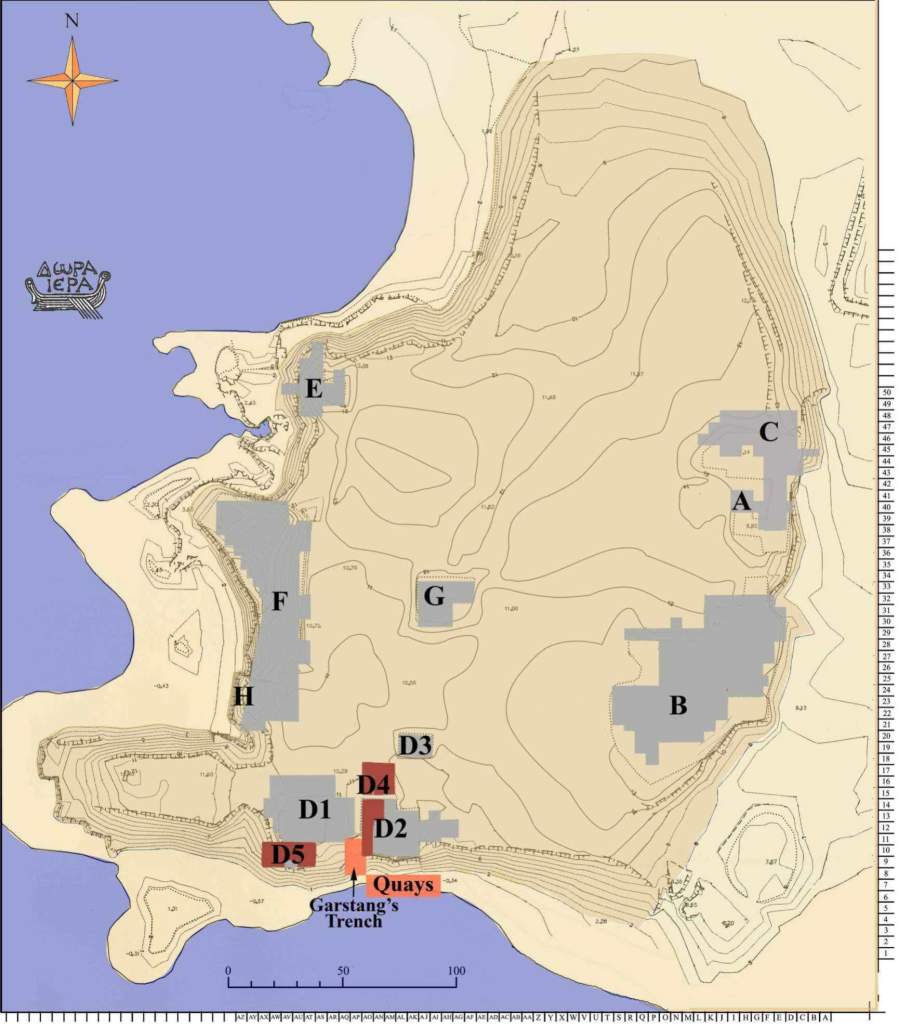Dor 2009 Preliminary Report
Introduction
The season
The twenty-seventh season of excavations at Dor was held on June 21 - August 17 2009. It was sponsored by the Israel Exploration Society and four academic institutions - The Hebrew University of Jerusalem (henceforward: HU), The University of Haifa (UH), the University of Washington, Seattle (UW) and the Pennsylvania State University (PSU).
The season consisted of a staff / publication season of two weeks (which concentrated, this year, on publication of areas B1 and G of Stern's excavations); followed by a four-week field season.
The season was supported by endowments, grants and donations from he Goldhirsh Foundation (the "Wendy Goldhirsh Dor Fellowships" funded two graduate students throughout the year, including the season); the Berman Institute of Biblical Archaeology (one student-scholarship), UH and the Zinman Institute of Archaeology (funding for the Haifa study excavation, equipment), and the University of Washington (travel grants and student scholarships). Several private donors contributed smaller sums of money. Additional activities that took place during the season (though not excavation itself) were funded by the Israel Science Foundation (Archaeozoology, 3D imaging of artifacts), and the White-Levy program for Archaeological Publication (publication of the Iron Age strata of Areas B and G).
The expedition was lodged at the Kfar Galim boarding school and working facilities were extended by the CONRAD (Ha-Mizgaga) museum at Kibbutz Nahsholim and its staff.
Students and Volunteers
The volunteer force consisted of students of UW team (about 25), a group recruited by Liz Bloch-Smith from (mainly) East-Coast colleges (about 15), about 10 students of PSU (for four weeks), some 10 Haifa University study-excavation students (two weeks); and some 15 'individual' volunteers.
Four field-schools were held on-site: UW ran the 'main' English speaking field-school. Haifa University had two courses - a study excavation, and an architectural conservation course (taught by Dr. Ravit Linn) in which, in addition to UH students, a dozen students of architecture from the Technion took part. During the latter, additional walls of the monumental Hellenistic structure excavated by Stern in Area D1 were treated.
PSU ran a program which integrated archaeological field techniques and conservation.
Excavation Strategy and Excavation Areas

Figure 1: Map of the tell and the excavation areas.
Excavation continued this year in the same three areas in which we have been digging since 2004 - three sub-areas of area D, on the south-west corner of the mound (Figures 1-2). In area D2, supervised by E. Bloch-Smith, we excavated remains of the Iron Age 1 and 2a, in the three northern units, while the high "penthouse" in the southern edge of the area was brought down to the level of the latest Iron Age floor. In area D4 we excavated Hellenistic remains, under the supervision of S. C. Stroup and A. Karasik, except for one new unit opened north of the previously excavated field, which went from surface to the Roman street. In area D5 (supervised by Y. Shalev) the central trench reached bedrock underneath Iron Age 1 levels, while D5 (west) concentrated on late Iron Age levels - disturbed by Persian and Hellenistic pitting, and D5 east was in Hellenistic and Persian levels. Conservation accompanying the excavation was conducted for some of the monumental Iron Age walls in areas D2 and D5, and, as mentioned, in area D1 of Stern's excavations.

Figure 2: Areas excavated in 2009 (in yellow).
- -- Table of Content -- |
- -- Top -- |
- -- Continue to Area D2 --